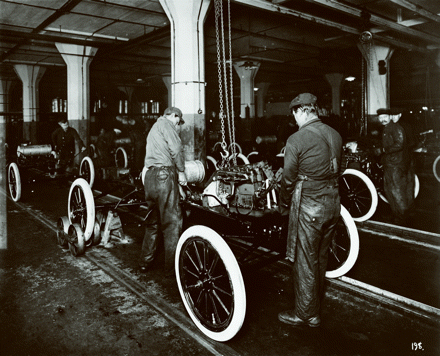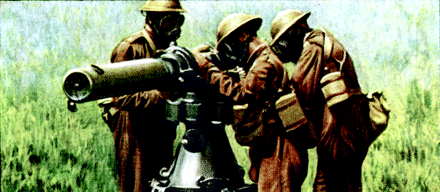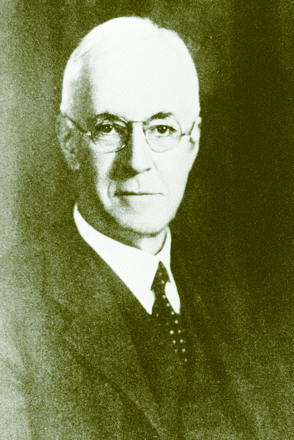ASPET celebrates its centennial anniversary
1911–1920
GAINING SPEED


In the 1910s, turn-of-the-century ingenuity was harnessed by industry, government, and science, leading to lasting changes in the modern way of life. Henry Ford’s new Model T automobile became available to the middle class through the introduction of mass production into American manufacturing. By 1914, the assembly line at Ford Motor Company was so efficient that a car could be assembled in ninety-three minutes. The Model T was said to have “put America on wheels.” In 1915, Thomas Hunt Morgan published The Mechanism of Mendelian Inheritance, describing another very efficient process, namely that by which genetic information is transmitted on chromosomes from parent to offspring.
OVER THERE

With the eruption of World War I in Europe, technological innovations were eagerly exploited for advantage on the battlefield. Among these was the development of gas masks to protect soldiers from the effects of chemical weapons such as mustard gas and chlorine. The use of chemical agents during WWI accounts for only a few percent of actual war casualties, but the effects of gaseous agents on their victims were gruesome and cruel, and the threat of such weapons placed great psychological burdens on all combatants. “The Chemist’s War,” as World War I has been called, was prolonged in part through Fritz Haber’s method for synthesizing ammonia, which in 1914 began to supplement the manufacture of German munitions by providing a source of fixed nitrogen. Haber’s fundamental process, for which he received the Nobel Prize in 1918, remains essential today for sustaining the world’s agricultural dependence on artificial fertilizers.
TWO DISTINCT TYPES OF ACTION…

In 1914, Sir Henry Dale reported, in the Journal of Pharmacology and Experimental Therapeutics, that acetylcholine, the active component of ergot extract, elicited peripheral effects that mimicked the activation of parasympathetic nerves. He termed this effect, which was completely blocked by atropine, the “muscarine” effect, and the response remaining in the presence of atropine he termed the “nicotine” effect, thus positing the existence of two types of acetylcholine receptors. He additionally noted that the effects elicited by acetylcholine were transient, suggesting the existence of an acetylcholinesterase. Dale championed the idea of standardization of bioactive compounds against a well-controlled reference so that pharmacological effects could be observed reproducibly; this notion remains one of Dale’s greatest contributions to drug development.
DOPE FIENDS AND FRIENDS

While the new science of pharmacology held great promise for improving human therapeutics through rigorous experimentation, the necessity to address a new widespread concern of drugs as harmful substances also became apparent. The Harrison Narcotics Act of 1914 was originally intended to regulate and tax the sale and marketing of opium and coca leaves, sources of the popular drugs morphine and cocaine. Ultimately, the Act was interpreted as a law against the distribution of these drugs to addicts by licensed physicians. Ironically, the Act thereby catalyzed illegal drug trade in the US and exacerbated the dire consequences of drug addiction in American society. In 1919, the Senate passed the Eighteenth Amendment to the Constitution, outlawing the sale, manufacture, and transport of another widely abused drug, alcohol. August Vollmer, the police official who established the first School of Criminology at Berkeley in 1916, would write with great foresight about the problem of addiction: “It is first and last a medical problem, and if there is a solution it will be discovered not by policemen, but by scientific and competently trained medical experts whose sole objective will be the reduction and possible eradication of this devastating appetite.”
- © American Society for Pharmacology and Experimental Theraputics 2007




